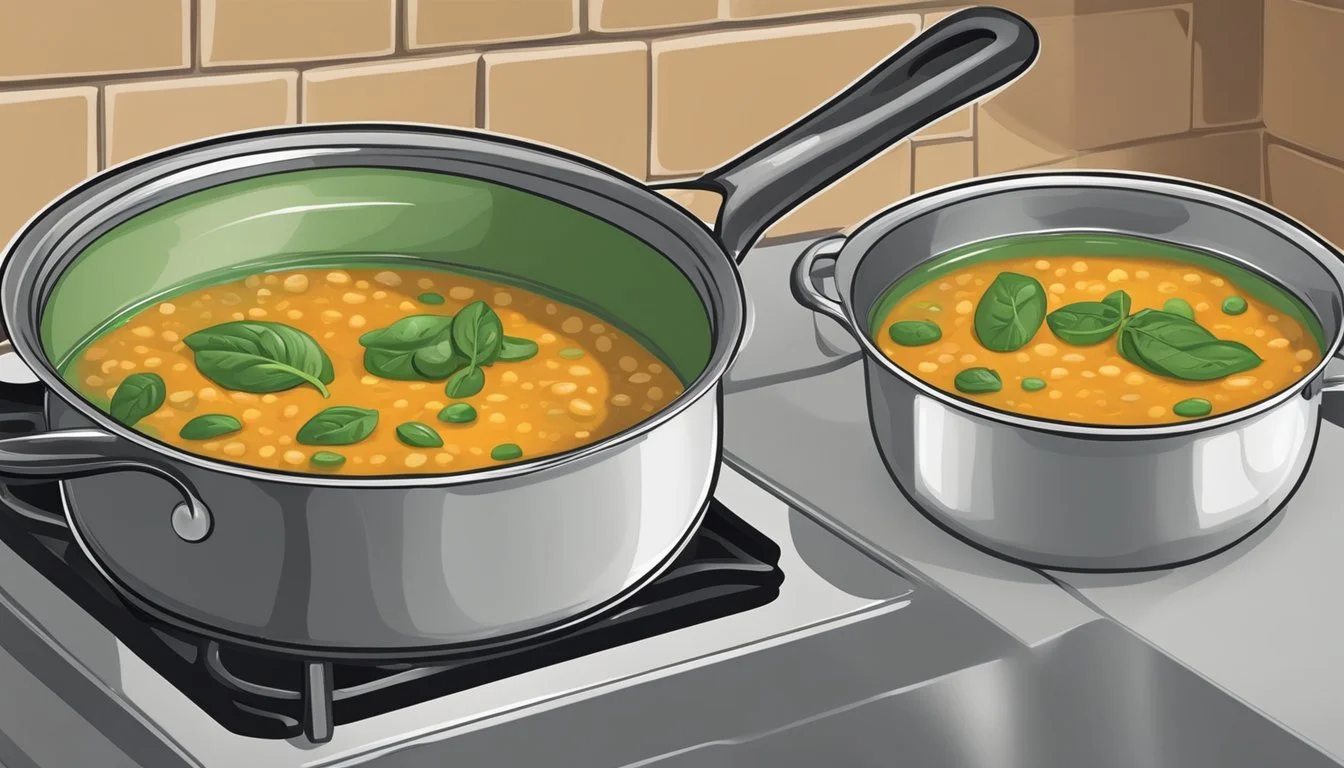11 Quick and Easy Weeknight Dinners for Diabetics
Healthy Meals for Busy Nights
Managing diabetes efficiently involves making smart dietary choices that keep blood sugar levels in check without compromising on taste or convenience. Meal planning, especially on busy weeknights, can be daunting for many. This article will provide practical solutions by presenting 11 quick and nutritious dinner recipes tailored for diabetics, ensuring both health and satisfaction.
These recipes focus on balancing nutrients while being mindful of carbohydrate intake, sodium levels, and saturated fats. By incorporating these easy-to-prepare meals into your weekly routine, you can enjoy delicious food that supports your health needs without spending hours in the kitchen.
1) Grilled Chicken with Quinoa Salad
Grilled Chicken with Quinoa Salad is a nutritious and delicious option for diabetics. This dish combines the lean protein of grilled chicken with the high fiber content of quinoa, making it an excellent choice for maintaining stable blood sugar levels.
First, season the chicken breasts with salt, pepper, and any preferred herbs. Grill each side for 5-7 minutes or until fully cooked. A marinade can be made with ingredients like lemon juice, garlic, and olive oil to add extra flavor.
While the chicken grills, prepare the quinoa. Rinse 1 cup of quinoa under cold water. In a pot, bring 2 cups of water to a boil. Add the quinoa, reduce the heat, and simmer covered for about 15 minutes. Once cooked, let it sit covered for an additional 5 minutes.
Fluff the quinoa with a fork and transfer it to a large bowl to cool. Additional ingredients such as chopped vegetables, feta cheese, and a light vinaigrette can be mixed into the quinoa for extra taste and nutrition.
This Grilled Chicken with Quinoa Salad is a satisfying and balanced meal. It provides essential nutrients without spiking blood sugar, making it ideal for those managing diabetes.
2) Baked Salmon with Asparagus
Baked Salmon with Asparagus is a nutritious and simple dinner option that suits a diabetic-friendly diet. It combines protein-rich salmon with fiber-packed asparagus, making it a balanced and satisfying meal.
Start by preheating the oven to 400°F. Place salmon fillets on a baking sheet and arrange asparagus around them. This setup ensures even cooking and easy cleanup.
Season the salmon and asparagus with salt, pepper, and a drizzle of olive oil. Adding a mixture of garlic, lemon juice, and a little broth enhances the flavors. Sprinkle this mixture generously over both the salmon and asparagus.
Topping the salmon with small pats of butter adds richness. Bake the arrangement for 10-12 minutes, depending on the thickness of the fillets. A quick broil at the end can give the dish a golden finish.
This method preserves the natural flavors and nutrients of the ingredients, making it an excellent choice for a healthy weeknight dinner. The combination of tender salmon and crisp asparagus provides a delightful eating experience while aligning with diabetic dietary needs.
3) Stir-Fried Tofu and Vegetables
Stir-fried tofu and vegetables offer a nutritious and delicious option for a quick weeknight dinner. This recipe combines protein-rich tofu with a variety of colorful vegetables, making it perfect for maintaining balanced blood sugar levels.
To prepare this dish, start by pressing the tofu to remove excess water. Once drained, cut the tofu into cubes and toss it with cornstarch for a crisp texture.
Heat a bit of oil in a non-stick pan and add the tofu. Cook the cubes for 2-3 minutes on each side until they are golden brown. Remove the tofu and set it aside.
In the same pan, stir-fry an assortment of vegetables such as bell peppers, broccoli, and carrots. Add your favorite low-sodium stir-fry sauce and cook until the vegetables are tender.
Finally, combine the tofu with the cooked vegetables and heat through. Serve this stir-fry over a bed of brown rice or quinoa for a filling, diabetes-friendly meal.
4) Lentil Soup with Spinach
Lentil Soup with Spinach is a nutritious and hearty option for diabetics. This dish combines the earthiness of lentils with the freshness of spinach, making it a wholesome meal choice.
Lentils provide a rich source of protein and fiber, which is beneficial for managing blood sugar levels. Spinach adds vitamins and minerals, enhancing the nutritional value of the soup.
This soup is prepared with aromatic vegetables such as carrots, onions, and celery. The inclusion of these vegetables adds depth of flavor and additional nutrients.
Cooking the soup in an Instant Pot can save time and maintain the nutrients of the ingredients. A splash of balsamic vinegar or fresh lime juice can brighten the flavors.
For a finishing touch, a garnish of radish and parsley can add a fresh and vibrant note to the dish. This soup is versatile enough to be enjoyed as a main dish or a starter.
5) Turkey Chili with Beans
Turkey chili with beans is a hearty and nutritious option for a diabetic-friendly weeknight dinner. Packed with lean protein and fiber, it supports stable blood sugar levels.
To prepare, begin by chopping jalapeño, red chili, onion, and garlic. Sauté these ingredients in a hot pan for a few minutes until the onions become translucent.
Add ground turkey to the pan and stir to combine. Cook the turkey until it browns. Stir in chili powder, ground cumin, and oregano for added flavor.
Mix in canned beans and whole tomatoes. Bring the mixture to a boil before reducing the heat to low. Cover the pot and let the chili simmer to meld the flavors together.
This dish can be ready in about 30 minutes, making it perfect for busy evenings. Serve it with a side of non-starchy vegetables to keep the meal balanced and nutrient-rich.
6) Quinoa and Black Bean Stuffed Peppers
Quinoa and Black Bean Stuffed Peppers make a fantastic weeknight dinner option. They are both nutritious and delicious, providing a good mix of protein, fiber, and essential vitamins. Preparing this dish involves simple, easy-to-find ingredients: quinoa, black beans, bell peppers, onion, garlic, and spices.
To begin, cook the quinoa in water or broth with added chili powder, cumin, and salt. While the quinoa cooks, sauté diced onion and garlic in a pan until soft. Next, mix the cooked quinoa with the sautéed onion, black beans, and your choice of salsa or diced tomatoes.
Cut the bell peppers in half, remove the seeds, and place them in a baking dish. Fill each pepper half with the quinoa mixture and top with shredded cheese. Preheat the oven to 375 degrees Fahrenheit and bake the stuffed peppers for about 15 minutes, or until the cheese is melted and the filling is heated through.
These stuffed peppers can be served hot, with a side of fresh greens or a light salad. They are an excellent option for anyone looking to enjoy a wholesome, diabetic-friendly meal that doesn’t compromise on flavor. The addition of lime juice or pico de gallo can enhance the dish further.
7) Spaghetti Squash with Marinara Sauce
Spaghetti Squash with Marinara Sauce is a great option for diabetics looking for a nutritious and flavorful meal. It is low in carbohydrates and high in fiber, making it perfect for maintaining stable blood sugar levels.
To prepare the dish, start by preheating the oven and cutting a spaghetti squash in half lengthwise. Remove the seeds and brush the cut sides with olive oil. Place the squash cut-side down on a baking sheet and roast until tender.
While the squash is roasting, prepare the marinara sauce. Combine tomatoes with garlic, olive oil, and Italian seasoning in a saucepan. Cook until the sauce thickens and the flavors meld together.
Once the squash is cooked, let it cool slightly and then scrape out the flesh with a fork to create spaghetti-like strands. Toss the strands with the marinara sauce and serve immediately. For added flavor, top with fresh basil or a sprinkle of Parmesan cheese.
This dish not only meets dietary needs but also offers a satisfying and delicious meal for the whole family.
8) Shrimp and Broccoli Stir Fry
Shrimp and broccoli stir fry is a quick and healthy dinner option, perfect for those managing diabetes. This dish is low in carbs and rich in protein and fiber, which helps in maintaining balanced blood sugar levels.
Start by preparing the sauce. In a bowl, whisk together ingredients such as soy sauce, garlic, ginger, and a touch of honey. Set this aside.
Heat a wok or large skillet over medium-high heat. Add a tablespoon of vegetable or olive oil. When hot, add the shrimp. Cook for about 2-3 minutes until they turn pink and are almost cooked through.
Remove the shrimp from the pan and set them aside. Add broccoli florets to the same pan. Stir-fry for about 2-3 minutes until tender.
Add the shrimp back to the pan along with the sauce. Stir to coat everything evenly and let it cook for another 1-2 minutes until the sauce thickens slightly.
Serve the shrimp and broccoli stir fry immediately. For a more filling meal, pair it with a small portion of brown rice or quinoa.
9) Garlic Lemon Chicken with Green Beans
Garlic Lemon Chicken with Green Beans delivers a flavorful and nutritious option for diabetic-friendly weeknight dinners. This dish combines tender chicken breasts seasoned with garlic and lemon for a zesty kick.
Fresh green beans add a crisp texture and are a great source of fiber.
To prepare, cook the green beans first in a skillet until they are tender but still crisp. Remove and set them aside. In the same skillet, melt butter and add the seasoned chicken breasts.
Cook the chicken until golden and thoroughly cooked.
Finally, add the green beans back to the skillet, mixing them with the chicken for a cohesive dish. This method ensures that all ingredients absorb the delicious garlic and lemon flavors.
10) Vegetable Frittata
A vegetable frittata makes a tasty and nutritious option for a quick weeknight dinner. Packed with fresh summer vegetables, it combines flavors and textures that are both satisfying and healthy.
In a medium bowl, whisk together eggs, egg whites, and milk. Season with a pinch of salt, pepper, and cayenne pepper. Fresh basil can also be added for an aromatic touch.
Heat a non-stick skillet over medium heat, and cook a selection of chopped vegetables until they are tender. Pour the egg mixture over the vegetables, stirring until the eggs begin to set. Use a spatula to smooth the top.
Once semi-set, transfer the skillet to a preheated oven. Bake for about 20 minutes or until the eggs are fully set. Slide the frittata out of the skillet onto a plate and slice into 8 wedges for easy serving.
This versatile dish can be customized with different vegetables and herbs based on personal preference. It not only provides a good source of protein but also contributes valuable vitamins and minerals from the vegetables.
11) Stuffed Zucchini Boats
Stuffed zucchini boats are an excellent option for a quick, diabetic-friendly dinner. These boats can be made with various fillings like seasoned ground turkey or beef mixed with herbs and vegetables.
To prepare, halve zucchinis and scoop out the seeds, leaving about a ¼-inch thickness all around to prevent tearing. Season the zucchini shells with salt, pepper, and Italian seasoning.
For the filling, cook ground meat with onions, garlic, and bell peppers. Stir in canned tomatoes and a bit of pasta sauce. Allow the mixture to simmer until it thickens slightly. Adding parmesan or mozzarella can enhance the flavor without adding excessive carbs.
Fill the zucchini boats with the cooked mixture. Arrange them in a baking dish and top with additional cheese if desired. Bake at 400 degrees Fahrenheit for around 10-15 minutes until the zucchinis are tender and the cheese is melted and bubbly.
These stuffed zucchini boats are not only easy to prepare but also pack a nutritious punch, making them a great addition to a diabetic meal plan. They can be customized with different types of meat or made vegetarian by using beans or lentils.
Health Benefits Of Balanced Dinners
Balanced dinners play a crucial role in managing diabetes and overall health. Specifically, they help in maintaining blood sugar levels and aid in weight management.
Maintaining Blood Sugar Levels
A balanced dinner that includes a mix of carbohydrates, proteins, and fats helps regulate the release of glucose into the bloodstream. By distributing glucose gradually, such meals prevent sudden spikes and subsequent crashes in blood sugar levels.
For instance, incorporating complex carbohydrates like whole grains, and fiber-rich vegetables can slow down digestion and glucose absorption. Adequate protein sources such as lean meats, beans, or tofu further stabilize blood sugar by enhancing insulin response. Healthy fats from avocados, nuts, or olive oil provide satiety and support metabolic health.
To exemplify, a dinner of grilled salmon with quinoa and steamed broccoli offers a mix of macronutrients that ensures a steady energy supply without causing hyperglycemia.
Weight Management
Eating a balanced dinner contributes to maintaining a healthy weight, which is vital in diabetes management. Meals rich in nutrients rather than empty calories help control hunger and reduce the likelihood of overeating.
Low-calorie, high-fiber foods such as vegetables and whole grains can make one feel fuller for longer periods. Proteins also play a critical role by promoting muscle maintenance and enhancing the feeling of fullness.
Monitoring portion sizes and choosing nutrient-dense over high-sugar foods can prevent weight gain. For example, a balanced meal like a chicken and vegetable stir-fry not only nourishes the body but keeps calorie intake in check, aiding weight loss or maintenance goals.
By focusing on these aspects, balanced dinners ensure sustainable health benefits aligned with diabetes management.
Key Ingredients To Include
To create quick and easy weeknight dinners for diabetics, it's crucial to incorporate lean proteins, whole grains, and fresh vegetables. These ingredients not only aid in managing blood sugar levels but also provide essential nutrients for overall health.
Lean Proteins
Lean proteins are vital for diabetics because they help maintain muscle mass and keep blood sugar levels stable. They are less likely to contain unhealthy fats, which can contribute to a variety of health issues.
Examples of lean proteins include:
Skinless poultry
Fish like salmon and cod
Plant-based proteins such as tofu and legumes
Lean cuts of beef or pork
Lean proteins can be quickly grilled, baked, or sautéed, making them perfect for quick weeknight dinners. Additionally, they pair well with a variety of seasonings and sauces, adding flavor without extra carbohydrates.
Whole Grains
Whole grains are an essential ingredient for diabetics because they are rich in fiber, which can help regulate blood sugar levels. Unlike refined grains, whole grains have all parts of the grain intact, providing more nutrients.
Examples of whole grains include:
Quinoa
Brown rice
Whole wheat pasta
Barley
Oats
Incorporating whole grains into dinners can be as simple as serving brown rice alongside a protein or using whole wheat pasta in a quick stir-fry. These grains also offer a hearty texture and can be cooked in advance to save time during busy weeknights.
Fresh Vegetables
Fresh vegetables are a cornerstone for diabetic-friendly meals because they are low in calories and high in vitamins, fiber, and minerals. They help enhance the meal's nutritional value without adding many carbohydrates.
Examples of fresh vegetables include:
Leafy greens like spinach and kale
Cruciferous vegetables such as broccoli and cauliflower
Colorful veggies like bell peppers and tomatoes
Root vegetables like carrots and sweet potatoes
These vegetables can be steamed, roasted, or eaten raw, making them versatile for any meal. They also add vibrant colors and textures, making the dish more appetizing while contributing to a balanced diet.
Meal Planning Tips For Diabetics
Effective meal planning is critical for diabetics to manage blood sugar levels. Two key strategies include controlling portions and reading nutrition labels.
Portion Control
Portion control is essential for diabetics to avoid spikes in blood sugar. Using smaller plates and measuring utensils can help keep food portions in check.
Eating balanced meals with a mix of protein, healthy fats, and complex carbohydrates is key. Visual aids like the plate method can guide serving sizes — half the plate for vegetables, a quarter for lean protein, and a quarter for whole grains.
Planning meals ahead of time, including snacks, helps resist the temptation of overeating. Keeping a food diary to monitor portions can also be beneficial.
Reading Nutrition Labels
Understanding nutrition labels allows diabetics to make informed food choices. Focus on the total carbohydrates section to monitor intake.
Look out for saturated fats and sodium since high amounts can negatively impact overall health. Evaluate the serving size and compare it to what you actually consume to get a realistic picture of intake.
Choose foods with higher amounts of fiber as it slows down the absorption of sugar. Ingredients listed at the beginning are present in the largest amounts, so prioritize products where wholesome ingredients appear first.









